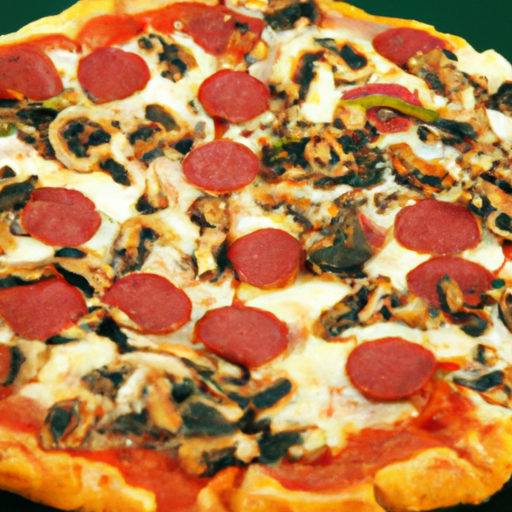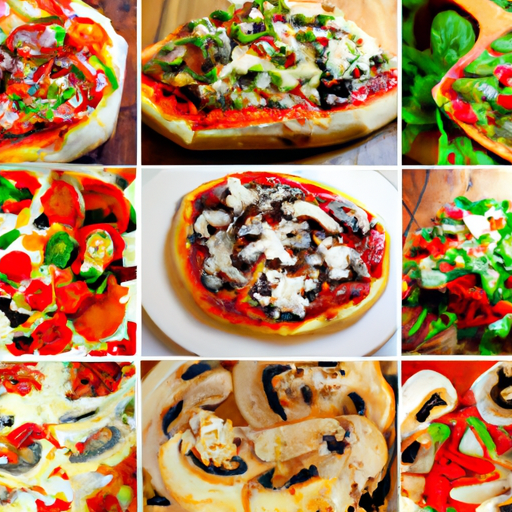In this article titled “How to Layer Pizza Toppings”, you will learn useful tips for topping your homemade pizza. The video, presented by America’s Test Kitchen, showcases the best techniques for adding sauce, cheese, and your favorite toppings. The America’s Test Kitchen Online Cooking School offers personalized culinary instruction, incorporating nearly 20 years of experience in the Test Kitchen and featuring recipes from Cook’s Illustrated magazine. Whether you’re a beginner or an experienced cook, this article will provide you with valuable insights on how to create a delicious and well-balanced pizza at home. From spreading the sauce evenly to choosing the right amount of cheese and toppings, you’ll discover the secrets to achieving a delectable pizza that will satisfy your taste buds. Remember to let your pizza rest for a few minutes before serving, allowing the cheese to set and avoiding any unfortunate mouth burns. So go ahead, dive into the world of pizza making and enjoy the delightful result!
How to Layer Pizza Toppings
Making homemade pizza is a fun and delicious way to enjoy a meal with family and friends. But, with so many options for toppings, it can be overwhelming to know where to start. Not to worry, I’ve got you covered! In this guide, I’ll take you step-by-step through the process of layering pizza toppings to create a mouthwatering masterpiece.
Get your pizza topping station here
Choosing the Right Sauce
The first step in layering pizza toppings is choosing the right sauce. Whether you opt for a classic marinara or a creamy Alfredo, the sauce sets the foundation for the flavors of your pizza. Take into consideration the overall taste profile you desire and choose a sauce that complements your other toppings.
Spreading the Sauce
Once you’ve chosen your sauce, it’s time to spread it evenly on your pizza crust. Use a large spoon or ladle to dollop the sauce onto the center of the crust, then use the back of the spoon or a spatula to spread it outwards in a circular motion. Be sure not to overload the crust with sauce, as it can make the pizza soggy. A thin layer of sauce is usually sufficient.

Get your pizza topping station here
Selecting the Cheese
Now comes the fun part — choosing the cheese! Mozzarella is the classic choice for pizza, known for its melty, gooey texture. However, you can get creative and experiment with different types of cheese, such as cheddar, provolone, or even a blend of cheeses. Aim for about 2-3 cups of shredded cheese to cover a standard-sized pizza.
Adding Parmesan
For an extra burst of flavor, sprinkle some grated Parmesan cheese over the top of your pizza. Parmesan has a salty, nutty taste that pairs well with almost any topping combination. Start with a light dusting, as a little goes a long way.
Using Mozzarella
Once your cheese selection is complete, it’s time to layer on the mozzarella. If you prefer a cheesier pizza, use a generous amount of shredded mozzarella and distribute it evenly over the entire surface of the pizza. Don’t forget to extend the cheese all the way to the edges of the crust to create a golden, delicious cheese pull.
Adding Vegetables
Vegetables add freshness, color, and a healthy twist to your pizza. From bell peppers and mushrooms to onions and spinach, the options are endless. When selecting vegetables, choose ones that will complement the other flavors on your pizza. You can either use a single type of vegetable or create a medley of flavors.
Preparing Hearty Vegetables
If you’re using hearty vegetables like bell peppers or onions, it’s best to pre-cook them slightly before adding them to the pizza. Sauté them in a bit of olive oil over medium heat until they begin to soften. This will help them cook evenly on the pizza and prevent them from becoming too crunchy.
Pre-cooking Vegetables
For vegetables that require a longer cooking time, such as broccoli or cauliflower, it’s a good idea to pre-cook them. Blanch the vegetables by boiling them in salted water for a few minutes until they are slightly tender. Drain them and give them a quick rinse under cold water to stop the cooking process. This step will ensure that your toppings are perfectly cooked when the pizza is finished.
Scattering Vegetables
For a visually appealing pizza, scatter your vegetables evenly over the cheese. This ensures that every bite will have a balanced mix of flavors. Avoid piling too many vegetables in one area, as this can cause the pizza to become soggy. Remember, moderation is key when it comes to toppings.
Including Meats
For those who enjoy a meatier pizza, it’s time to add your favorite meat toppings. From classic pepperoni and sausage to more adventurous options like bacon or prosciutto, the choice is yours. Remember to balance the amount of meat with the other toppings to create a harmonious flavor profile.

Recommended Meat Amount
For a standard-sized pizza, about half a cup to one cup of meat should be sufficient. It’s important not to overload the pizza with too much meat, as it can lead to an unbalanced taste and texture. Aim for an even distribution of meat toppings throughout the pizza.
Pre-cooking Meats
Some meats, like sausage or ground beef, are best pre-cooked before adding them to the pizza. Cook them in a skillet on the stovetop until they are browned and cooked through. This ensures that the meat is fully cooked on the pizza and prevents any potential food safety issues.
Cooking Sausage
When using sausage as a topping, remove the casing and crumble the meat into smaller pieces. This allows for even cooking and easier distribution on the pizza. Cook the crumbled sausage in a skillet over medium heat until it is browned and no longer pink in the center.
Cooking Pepperoni and Ground Beef
Pepperoni and ground beef can be cooked directly on the pizza without pre-cooking. However, if you prefer a slightly crispier texture, you can cook these meats separately before adding them to the pizza. Fry the pepperoni slices in a dry skillet until they become slightly crispy. For ground beef, cook it in a skillet until it is browned and cooked through. Remember to drain any excess grease from the meat before adding it to the pizza.
Incorporating Delicate Vegetables
Delicate vegetables like cherry tomatoes or fresh herbs should be added towards the end of the cooking process to prevent them from becoming too wilted or overcooked. These toppings can be added fresh or slightly roasted, depending on your preference.
Handling Delicate Vegetables
If you’re using delicate vegetables that easily release water, like fresh tomatoes or leafy greens, it’s a good idea to remove excess moisture before adding them to the pizza. You can do this by blotting them with a paper towel or lightly roasting them in the oven for a few minutes to evaporate some of the moisture.
Two Ways to Add Basil
Basil is a popular herb that adds a fresh and aromatic touch to pizza. There are two ways to incorporate basil into your pizza: you can either tear the leaves into smaller pieces and scatter them over the top as a finishing touch, or you can chop the leaves and mix them into the sauce for a more subtle flavor. Both methods work well, so choose the one that suits your taste preferences.
Finishing Touches
Once all your toppings are in place, it’s time to add any finishing touches you desire. This could be an extra sprinkle of cheese, a drizzle of olive oil, or a sprinkle of dried herbs like oregano or red pepper flakes for added flavor. Get creative and add those little extras that will take your pizza to the next level.
Allowing Pizza to Set
Before slicing into your delicious creation, it’s important to let your pizza set for a few minutes. This allows the cheese to firm up slightly, making it easier to cut and ensuring that your toppings stay in place. Use this time to prepare any additional garnishes or sides you may want to serve alongside your pizza.
Now that you know how to layer pizza toppings like a pro, it’s time to unleash your creativity and start building your own flavor combinations. Remember, the key is to balance the flavors and textures to create a pizza that is not only visually appealing but also incredibly delicious. So gather your favorite ingredients, grab a pizza crust, and let the topping layering adventure begin!
In our “How to layer pizza toppings” tutorial, we’ll show you the best techniques for adding sauce, cheese, and your favorite toppings to homemade pizza. You can learn these skills and more by joining the America’s Test Kitchen Cooking School. It’s a cooking school unlike any other, where we provide personalized culinary instruction from the comfort of your own kitchen. There are no prerequisites, so anyone can join. Learn more at: America’s Test Kitchen Cooking School
